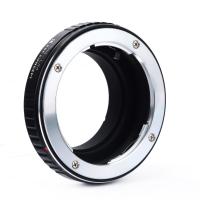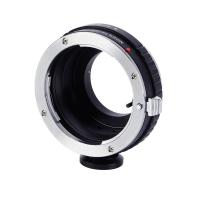What Does Weed Look Like Under A Microscope ?
Under a microscope, weed (cannabis) appears as a complex structure of trichomes, which are tiny hair-like structures that cover the surface of the plant. Trichomes are responsible for producing and storing the plant's cannabinoids, including THC and CBD, which are the compounds that give cannabis its psychoactive and medicinal effects.
The trichomes on cannabis plants can be seen as small, mushroom-shaped structures that are typically less than 0.1mm in size. They are often covered in a sticky resin that contains the plant's cannabinoids and terpenes, which give cannabis its distinctive aroma and flavor.
When viewed under a microscope, the trichomes on cannabis plants can appear as clear, bulbous structures, or they may have a cloudy or amber color, depending on the maturity of the plant. The size and shape of the trichomes can also vary depending on the strain of cannabis and the growing conditions. Overall, viewing cannabis under a microscope can provide a fascinating glimpse into the complex and intricate structure of this versatile plant.
1、 Trichome morphology and distribution
What does weed look like under a microscope? When examining cannabis under a microscope, the most prominent feature is the trichomes. These tiny, hair-like structures cover the surface of the plant and contain the majority of the plant's cannabinoids and terpenes. Trichomes come in three different types: bulbous, capitate-sessile, and capitate-stalked.
Bulbous trichomes are the smallest and contain the least amount of cannabinoids and terpenes. Capitate-sessile trichomes are slightly larger and contain more cannabinoids and terpenes than bulbous trichomes. Capitate-stalked trichomes are the largest and contain the highest concentration of cannabinoids and terpenes.
Trichome morphology and distribution can vary depending on the strain of cannabis and the growing conditions. Some strains may have more capitate-stalked trichomes, while others may have more capitate-sessile trichomes. The density of trichomes can also vary, with some strains having a higher concentration than others.
Recent research has shown that the distribution of trichomes can also be influenced by environmental factors such as light intensity and temperature. Higher light intensity and cooler temperatures have been found to increase the density of trichomes on the plant.
In conclusion, when examining cannabis under a microscope, the most prominent feature is the trichomes. Trichome morphology and distribution can vary depending on the strain of cannabis and the growing conditions, and recent research has shown that environmental factors can also influence trichome density.

2、 Cellular structure of cannabis plant
The cellular structure of the cannabis plant has been studied extensively under a microscope. The plant consists of various types of cells, including epidermal cells, parenchyma cells, and trichomes. The trichomes are the most important part of the plant as they contain the cannabinoids and terpenes that give the plant its medicinal and psychoactive properties.
Under a microscope, the trichomes appear as small, mushroom-shaped structures that protrude from the surface of the plant. They are made up of a stalk and a head, which contains the resin glands that produce the cannabinoids and terpenes. The size and shape of the trichomes can vary depending on the strain of cannabis and the growing conditions.
The cellular structure of the cannabis plant has been the subject of much research in recent years, as scientists seek to understand the plant's medicinal properties and how they can be used to treat various conditions. One area of research has focused on the role of the endocannabinoid system in the body and how cannabinoids interact with it to produce their effects.
Overall, the cellular structure of the cannabis plant is complex and fascinating, and further research is needed to fully understand its properties and potential uses.

3、 Identification of cannabinoids and terpenes
What does weed look like under a microscope? When viewed under a microscope, cannabis appears as a complex structure of trichomes, which are small, hair-like structures that cover the surface of the plant. These trichomes contain the active compounds of the plant, including cannabinoids and terpenes.
Identification of cannabinoids and terpenes is crucial for understanding the effects of different strains of cannabis. Cannabinoids are the chemical compounds that interact with the body's endocannabinoid system, producing a range of effects such as pain relief, relaxation, and euphoria. Terpenes are the aromatic compounds that give cannabis its distinctive smell and flavor, and also have their own therapeutic properties.
Recent research has shown that the composition of cannabinoids and terpenes can vary widely between different strains of cannabis, and even within the same strain grown under different conditions. This has led to a growing interest in the use of analytical techniques such as gas chromatography and mass spectrometry to identify and quantify these compounds.
In addition to their medical and recreational uses, cannabinoids and terpenes are also being studied for their potential as industrial and agricultural products. For example, some terpenes have been shown to have insecticidal properties, while others may have applications in the production of fragrances and flavors.
Overall, the study of cannabinoids and terpenes is an exciting and rapidly evolving field, with new discoveries and applications emerging all the time.

4、 Analysis of resin gland development
What does weed look like under a microscope? When viewed under a microscope, cannabis appears as a complex and intricate plant structure. The most notable feature of cannabis under a microscope is the resin glands, which are responsible for producing the plant's psychoactive compounds. These glands, also known as trichomes, appear as small, mushroom-shaped structures on the surface of the plant.
Analysis of resin gland development has revealed that trichomes go through several stages of development before reaching maturity. Initially, trichomes are small and translucent, but as they mature, they become larger and more opaque. At maturity, trichomes are filled with resin, which contains the plant's psychoactive compounds, such as THC and CBD.
Recent research has also shed light on the role of trichomes in protecting the plant from environmental stressors, such as pests and UV radiation. Trichomes produce a variety of compounds, including terpenes and flavonoids, which act as natural insecticides and sunscreens.
In conclusion, when viewed under a microscope, cannabis appears as a complex and intricate plant structure, with the most notable feature being the resin glands or trichomes. Analysis of resin gland development has revealed that trichomes go through several stages of development before reaching maturity, and recent research has highlighted the role of trichomes in protecting the plant from environmental stressors.





























There are no comments for this blog.